Optimizing Your Workshop: The Ideal Storage Unit for Woodworking

Summary
Efficient Storage: Combines the importance of organized storage with a variety of options like cabinets, racks, and mobile carts.
Materials & Care: Discusses wood, metal, plastic choices and their maintenance.
Organization & Security: Covers organizational strategies and security features like locks.
Protection & Customization: Highlights environmental protection and customization for workshops.
Ergonomics & Style: Focuses on ergonomic design and aesthetic appeal.
Future Planning: Emphasizes scalable solutions and the overall significance of strategic storage in woodworking.
Let’s talk about something crucial in our workshops: efficient storage. It’s not just about keeping things tidy; it’s about making your workflow smoother and safer. Ever noticed how a well-organized space can transform your entire woodworking experience? That’s Storage Unit for Woodworking what we’re discussing here.
We’re going to explore the various types of storage units and how they can be absolute game-changers in your workshop. From tool cabinets to mobile carts, each has its unique benefits that can revolutionize the way you work.
Types of Storage Units That Allow Woodworking
Tool Cabinets
Features and Advantages:
Tool cabinets are the unsung heroes of the workshop. They’re versatile, sturdy, and essential for keeping your tools safe from dust and rust. With smooth drawers and smart compartments, these cabinets are a woodworker’s best friend.
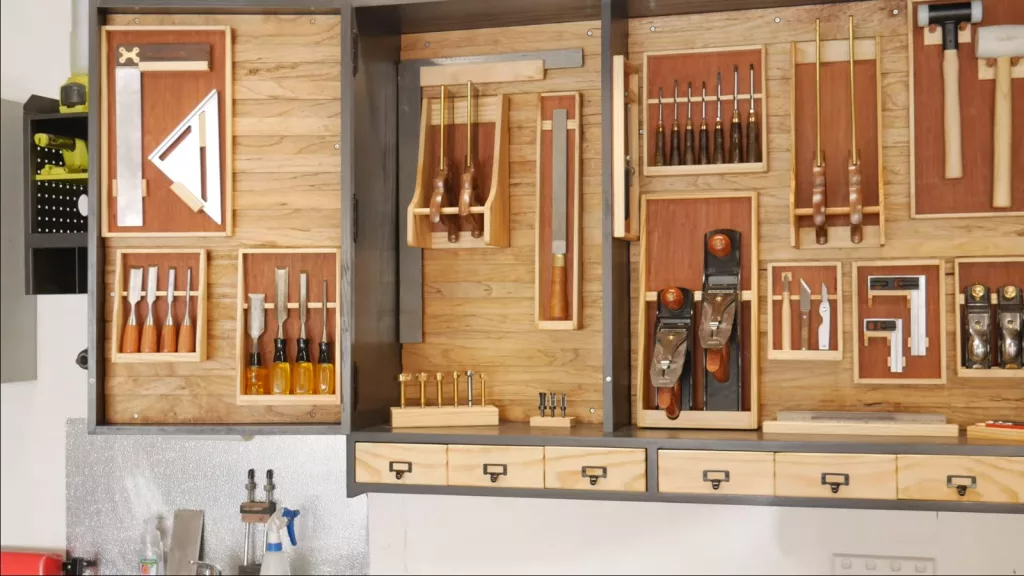
Choosing the Right Tool Cabinet:
Selecting the right cabinet is a personal choice. Think about the size of your tools and your workshop space. And hey, if you like to shake things up, consider a cabinet with wheels for easy mobility.
Lumber Racks
Vertical vs. Horizontal Racks:
Choosing between vertical and horizontal lumber racks? It’s all about your space and the type of wood you work with. Vertical racks save space, while horizontal racks offer easy access.
Tips for Organizing Lumber:
Keep your lumber organized by size and type. It not only saves time but also prevents moisture damage. A little organization can make a big difference.
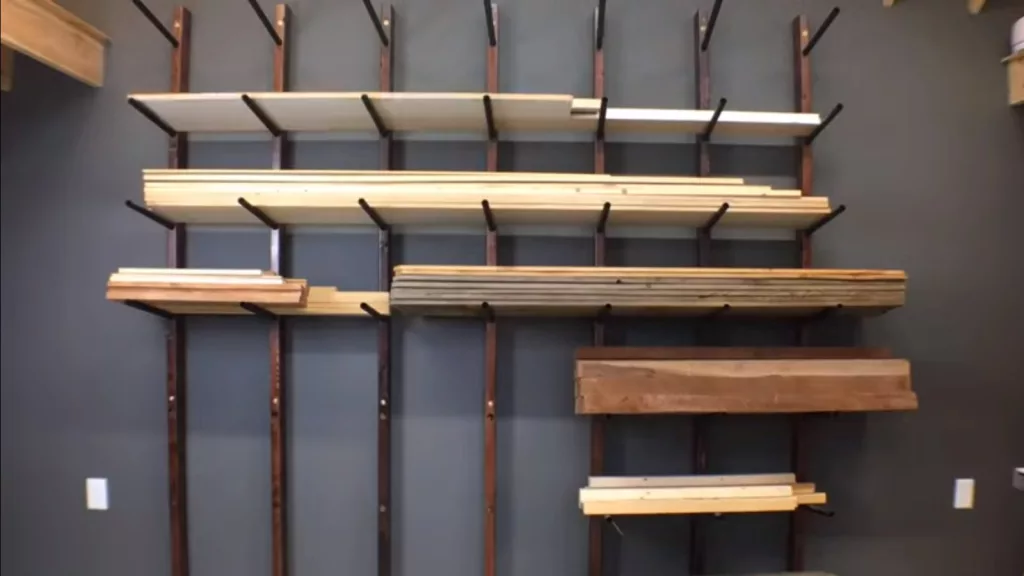
Workbenches with Storage
Integrating Storage into Your Workbench:
Your workbench can double as a storage powerhouse. Adding drawers and shelves underneath can keep your essentials within arm’s reach.
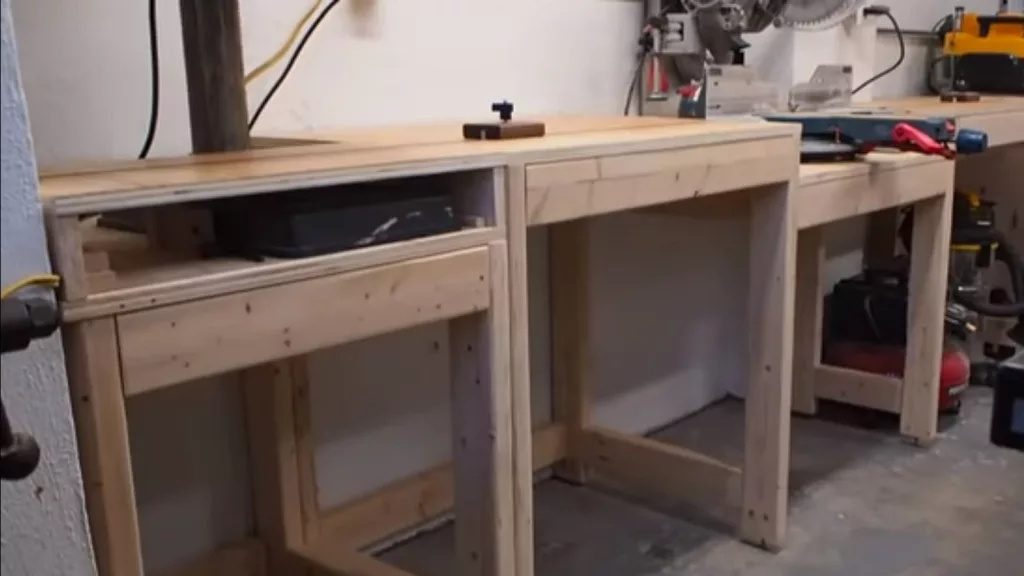
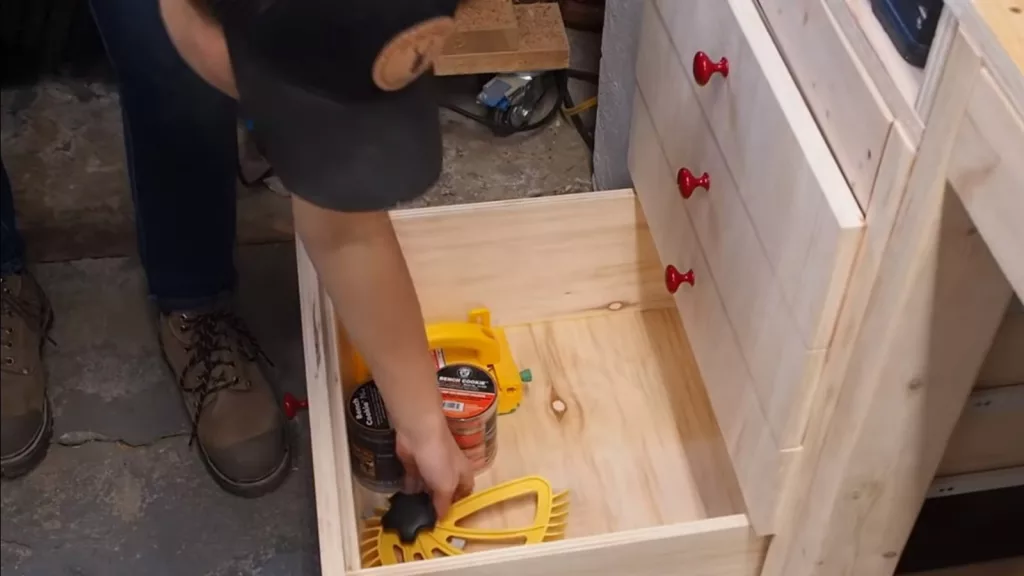
Customization Ideas:
Why not personalize your workbench? Add magnetic strips or custom tool holders to make your workspace uniquely yours.
Wall-Mounted Racks and Pegboards
Setting Up an Efficient Wall Storage System:
Don’t overlook your walls! Wall-mounted racks and pegboards can turn your wall into a functional storage area, keeping tools visible and accessible.
Pegboard Accessories and Tips:
Pegboards offer endless customization. Use hooks, shelves, and bins to create a flexible storage system that adapts to your needs.
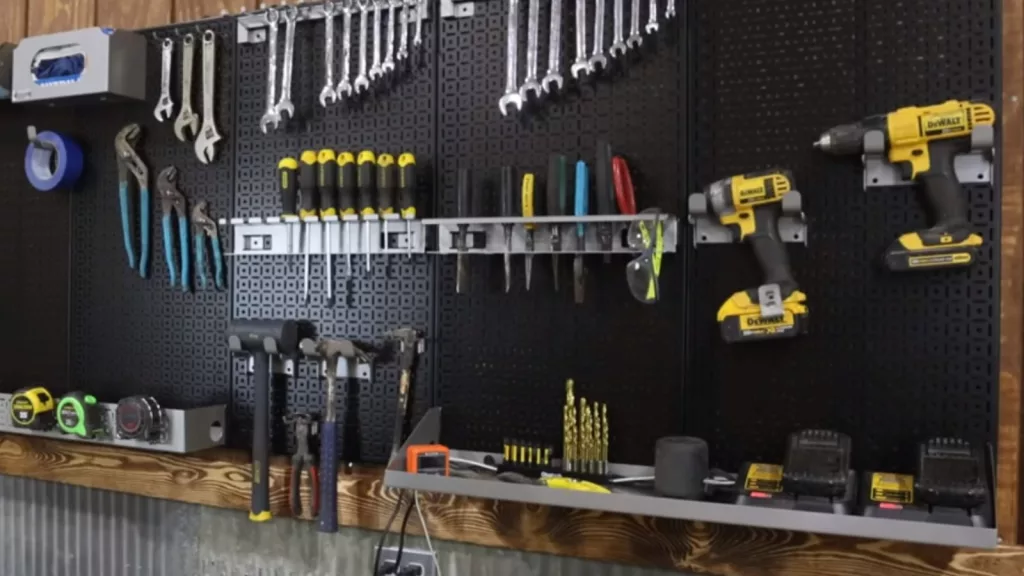
Mobile Carts
Benefits of Mobility in Workshops:
Mobile carts bring your tools to you. They’re perfect for moving tools and materials around, reducing unnecessary trips across your workshop.
Selecting Durable Mobile Carts:
When choosing a mobile cart, look for durability and the right size. A sturdy, well-sized cart can be a real time-saver.
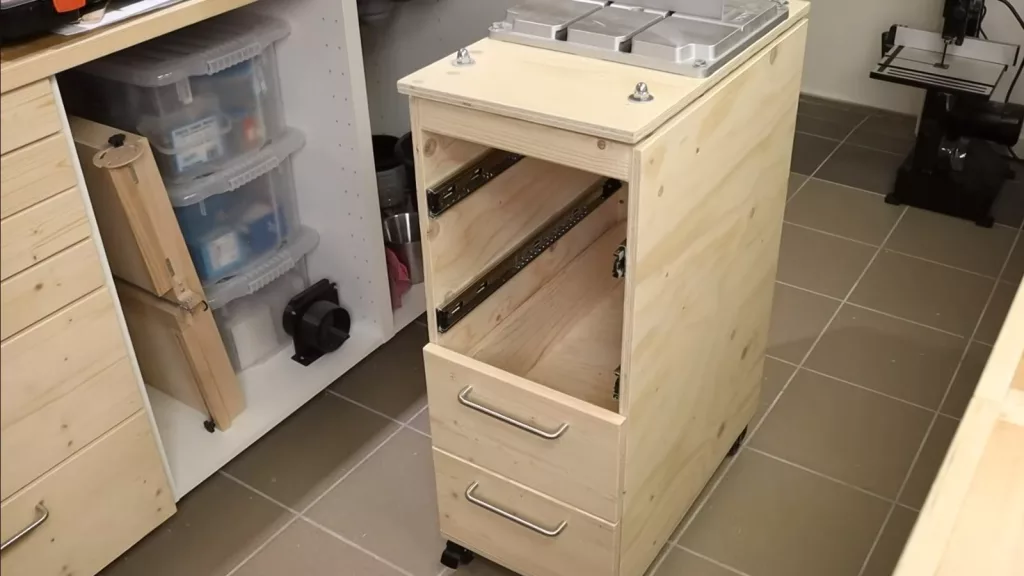
Material Considerations for Storage Units
Wood vs. Metal vs. Plastic: Pros and Cons
- Wood Units: Traditional craftsmanship, customizable, but less durable under heavy use.
- Metal Units: Very durable for heavy tools, but more expensive.
- Plastic Units: Lightweight, affordable, but not suitable for heavier tool storage.
Durability and Maintenance Tips
- Wood Care: Use protective finishes to prevent moisture damage.
- Metal Maintenance: Regular checks for rust, despite high durability.
- Plastic Upkeep: Low maintenance but avoid overloading and keep clean.
Size and Capacity: Matching Your Needs
Assessing Your Storage Requirements
- Evaluate Space: Consider workshop size before choosing large cabinets.
- Storage Needs: Assess current and future needs for adequate capacity.
- Practicality: Balance between size of unit and storage requirements.
Avoiding Overloading and Safety Tips
- Prevent Overloading: Understand and adhere to weight limits of storage units.
- Even Load Distribution: Ensure even distribution of items to maintain balance.
- Secure Tall Units: Attach tall storage units to the wall to prevent tipping.
Organizational Strategies for Woodworking Storage
Labeling and Categorization Techniques
- Use Labels: Implement labeling for easy tool identification and access.
- Smart Categorization: Organize tools by project type or tool size for intuitive retrieval.
- Personalized System: Tailor categorization to your specific workflow and preferences.
Tools for Efficient Storage Management
- Drawer Dividers: Use dividers for organized and separated tool storage.
- Tool Organizers: Implement organizers for efficient arrangement of tools.
- Pegboards: Utilize pegboards for accessible and visible tool placement.
- Software and Apps: Employ digital tools for tracking inventory and storage locations.
Security Features in Storage Units
Locking Mechanisms and Their Importance
If you’ve got some fancy tools (and let’s face it, who doesn’t want fancy tools?), security is key. Locking mechanisms on your storage units can protect your investment from both the elements and any unwelcome visitors. Plus, it gives you peace of mind, and that’s priceless.
Protecting Valuable Tools and Equipment
Beyond locks, think about where you’re placing your units. Keeping them in a dry, clean area will extend their life and protect your tools. And consider insurance for those really high-ticket items. Better safe than sorry!
Protecting Tools from Environmental Factors
Moisture and Dust Protection Solutions
Let’s face it, moisture and dust are the archenemies of any woodworking shop. To keep your tools in top shape, think about moisture-absorbing products like silica gel packs in your drawers. And for dust? Regular cleaning is key, but you can also look into air filtration systems to keep those pesky particles at bay.
Sealed Cabinets and Protective Linings
Sealed cabinets are like a fortress for your tools, keeping the elements out. Consider adding protective linings like foam or rubber mats in drawers to cushion your tools and absorb any moisture. It’s a small step that can extend the life of your tools significantly.
Customization: Tailoring The Storage Unit for Woodworking
DIY Storage Solutions
There’s nothing quite like building your own storage solutions. It’s not just about saving money; it’s about creating something that perfectly fits your space and needs. From custom shelving to unique tool holders, the possibilities are endless. Plus, it’s a great excuse to spend more time in the workshop!
Adapting Storage Units to Specific Needs
Your workshop is unique, so your storage should be too. Think about modifying existing units to better suit your needs. Maybe it’s adding extra shelves or creating a custom tool rack. The goal is to make your space work for you.
Check this video for more clarity.
Ergonomics and Accessibility in Storage Design
Designing for Comfort and Efficiency
Ergonomics isn’t just a fancy word; it’s about making your workshop a comfortable place to be. That means storage at the right height, drawers that are easy to open, and everything within easy reach. Your back will thank you.
Placement and Height Considerations
Think about the layout of your workshop. Place frequently used tools within arm’s reach and less used items higher up or in lower drawers. It’s all about minimizing strain and maximizing efficiency.
I follow this guy’s videos for storage ergonomic ideas.
Aesthetic Considerations in Workshop Storage
Blending Functionality with Style
Your workshop is your sanctuary, so make it a place you enjoy being in. Choose storage units that not only serve their purpose but also look good. Whether it’s a vintage vibe or a modern look, let your personality shine through.
Workshop Appearance and Impression
First impressions matter, even in a workshop. A well-organized, stylish space can be a source of inspiration and pride. It’s not just about storage; it’s about creating an environment that fuels your creativity.
Planning for Future Expansion
Scalable Storage Solutions
Think long-term. Your tool collection is going to grow, so invest in storage solutions that can grow with you. Modular systems are great because you can add to them as needed, ensuring your storage keeps up with your workshop.
Anticipating Future Storage Needs
It’s all about looking ahead. Maybe you don’t need that extra cabinet now, but what about in a year? Plan for the future to avoid a major overhaul down the line.
Conclusion
In summary, our exploration of woodworking storage highlights the importance of protecting tools and planning for the future. The right storage solutions significantly enhance your woodworking experience by ensuring efficiency and organization. A well-organized workshop leads to a more productive and enjoyable woodworking journey. So, embrace these storage strategies for a successful and fun experience in your workshop. Happy building!





